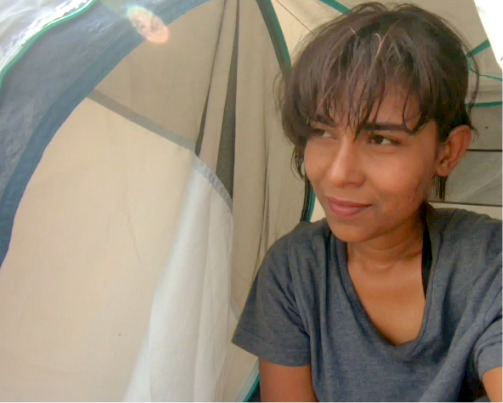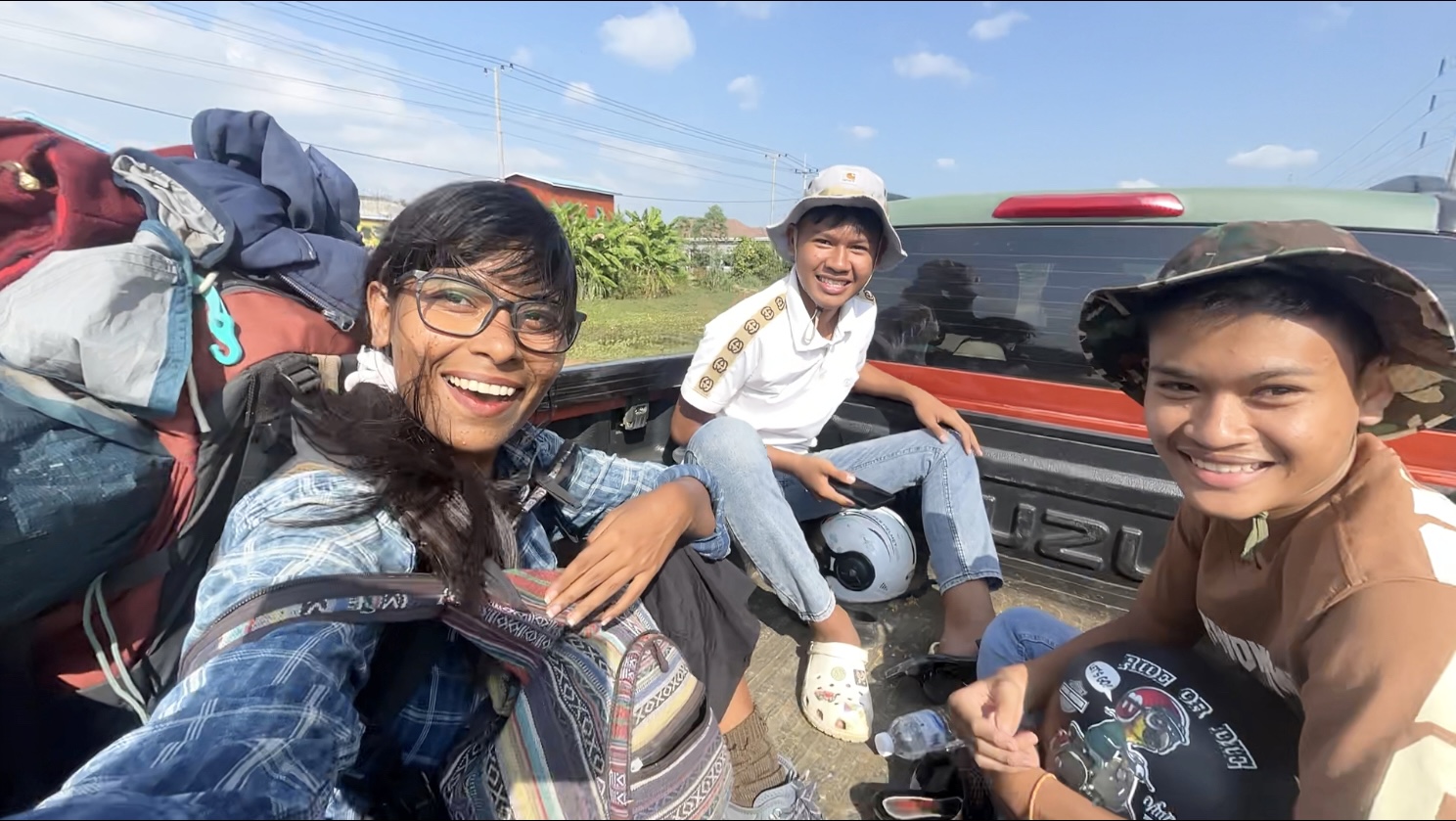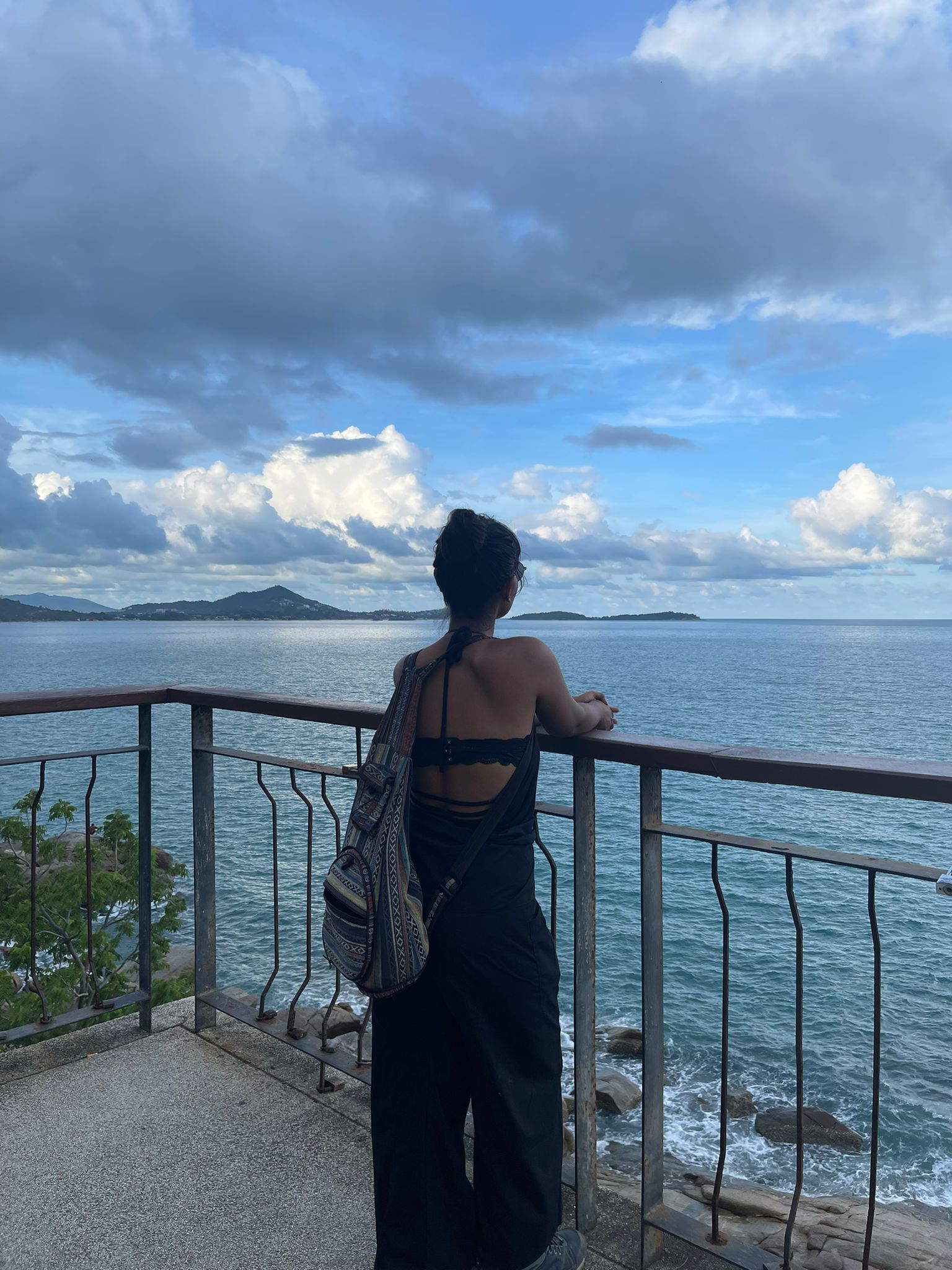Solo Camping at Australian Camp in Nepal, and a thunderstorm ambushed me in deep sleep! I could have fallen off the edge.
What I am experiencing through the wiry window of my tent is a foggy frame, that… That’s when I got interrupted by noise. No, not the shudder of the thundering, but human voice, sometimes I like to call it ‘human noise’.
Australian Camp… Whenever a piece of green land passes by against the window of a bus, and I am in that moving bus, my eyes always systematically monitor all the places I could have camped in for the night. That’s a little game I like to play with myself.
But, let me resume…. What I am experiencing through the wiry window of my tent is a foggy frame, that may or may not get cleared. You are supposed to witness…. but where is Machapuchare! Through the fog and the dense clouds dispersed unevenly all over the gray sky, I can only leverage the dark-black hills nearby. But why am I not disappointed with no Annapurna Range in sight!

It’s just green land, 100-200m behind one of the guesthouses at Australian Camp. A few heaves and lows with fences slithering away along the narrow patch, and an abandoned hut locked away in white. The fences end, and therein sleeps my dreamy little land, on the edge of the mountain. On one pole, there’s a ‘No Smoking’ placard, and on another, a handmade basket has been fastened with ropes for campers to use it as a dustbin.
I don’t have to mention it with a speaker in my hand nowadays (actually I have to), because it has become a ‘given’ or a norm, that even at 2060 meters on an aesthetic land, plastic bottles and packets are just casually lying around! How do the parasites find their way to even the littlest corners of this world; the land, or the lands that will soon evaporate!
Australian Camp is the kind of land that daydreams are made of. All my dreams are made of all kinds of green lands. It’s where you can put your backpack down. It’s where you rest for days, and live.
Also read – An Extensive Guide to the Best Places to Visit in Nepal
Where is Australian Camp?
It is a day-hike near Pokhara in Nepal, the base of which can either be Kande or Phedi. If you take the route through Phedi, you will have to hike to Dhampus Village first, take a short break, and then hike straightaway further up to Australian Camp from 1650m to 2060m. Or, you may decide on the path I trod on. A bus-ride up to Kande (from Zero Point in Pokhara to Kande, local buses go directly to Kande for NPR 110), and then hike for one hour to your destination; and if you want to hike further, here’s the complete route map this trail follows.
- From Kande to Australian Camp – 1 hour
- From the Camp to Pothana – 1.5 hours
- From Pothana to Deurali – 2 hours
- From Deurali to Forest Camp – 5 hours
- From Forest Camp to Low Camp – 6 hours
- From Low Camp to Badal Danda – 7 hours
- From Badal Danda to High Camp – 9 hours
The stone-dotted incline is marked by red arrows on big stones, and there’s no way you need a guide or a partner for this stretch, at least not up till Australian Camp. A handful of local houses and shops disappear after 1 km, so do the cute little white goats you can cuddle on the way!
Also, I become fully aware of myself; my body and my mind. It’s in that fearfulness and the unwanted anticipation of the wilderness that I listen to the green around me, and I know I am fully existent, let it be in the chomping of my shoes against the dry crunchy leaves, or in the silence.
On My Way to Australian Camp – The Story Continues
Two bags and a tent – the weight was weighing me down. And the 30-degree-C-radiating sun had its own purpose. To stifle my steps, to take it rather personally? Yes, the charismatic weather pattern of Pokhara is an enigma in itself; a moody lover? Although I should hardly be confused at the impromptu ruptures, the sudden morsels of nature, falling out. The monsoon is premature this year. If I take out one single day, the sun overshines for the first tip of the day, and the next half, thunder-lightening-rain-storm. That’s the way it is.
In February, on the landscape of a normal day, a hailstorm shook the Pokhara-residents in surprise. That’s how the stories are forming in the mouths of the Nepali residents. Stories of climate change.

I breathed. I was already flushed out of the heat of the hour. I was breathing, or rather panting, as if I had climbed the giant Himalayas!
I breathed. This time not the heavy heaps of panting.
It felt like I breathed in ages! My paradise is grounded. I don’t see it in the air.
Two-three guesthouses. The manager of the guesthouse at Australian Camp, a Buddhist man, is possibly in his mid-forties, but I was never any good at age-telling. I pitched my tent in the distant backyard of the guesthouse, and in the quietness of the day, I sorted out picked onions in baskets with the owner’s family. And played with a wide-eyed yellow-brown kitten!
It’s the simple life that is not simple. Except for it is.
All through the hike, there really was not a singular soul, curtailing a few locals who after the initial 1 km disappeared, and until you reach the camp, there’s just the sound of the forest.
And in the sound of the forest, you can get lost.
Not literally. As it turned out, I was really midway in the midst of the summery direct-rays in the cool season of pre-monsoon. The one-hour climb towards the Australian Camp cornered me to the trap of excessive heat and a dry humid weather pallet. I had to stop every fifteen minutes, to cope with the rising heat. Although it’s partially my bad, I started hiking mid-day, at peak hours.
My heart both puffs and fluffs in the midst of deep forests, when I am all by myself. I seem not to mind the fearfulness when accompanied by someone, but the reception of every sound from the woods is a wild animal carefully following me from behind the trees. And I always imagine tigers, even though bears are really the problem!
Also, I become fully aware of myself; my body, and my mind. It’s in that fearfulness and the unwanted anticipation of the wilderness that I listen to the green around me, and I know I am fully existent, let it be in the chomping of my shoes against the dry crunchy leaves, or in the silence.
I do not like to hike in a group.
Also read – Practical Things to Know Before Visiting Nepal
Why ‘Australian’ Camp?
Why ‘Australian’ Camp? One theory, which is rather a faded one, believes that Australians in the 1960s used to hike up till here and pitch their tents. But the more favored understanding of the name is a matter of mispronunciation. It’s not the Australians, but rather the Austrians, who made this piece of land famed with their camping. Over time, in local tongues, the Austrians became Australians!
Thunderstorm, Like I Have Never Seen Before
I rushed down to Pokhara from Australian Camp the next morning, and could not circle around Pothana and all the way, as I thought I would. The curious weather all along the day was exhaustingly sunny. At around 9 or 10 pm, my eyes opened to the sound of the wind. I was dozing off inside the tent until the larger-than-the-night hissing sound of the wind assimilated in the deep ringing of thundering.
So it’s raining! It’s fine, I enjoy camping in the rain! It’s a cool refuge from an exclusively hot day!
My mind became fully aware of the danger when my body felt the movement of the tent. I looked up at the solar light. It was 45 degrees east of where it was supposed to be. The outward wind has force, and potential! The peak was on a diagonal, and the walls of the tent were ready to burst into shivers. A drop of rain fell on my palms. There’s a leak!
No, I am not safe inside the tent, on the edge of a mountain at Australian Camp, when the wind is trying to tear my tent apart! I packed everything in my backpack, with one hand holding onto the green hook of my tent moving violently further east. I had to get out! I had to unzip the tent!
And I did. In the opened-up new room, the gush of wind took my breath away, and almost my tent. I zipped the tent back in an instant. I can’t get out like that! But I have to get out! Chances are, the external air pressure (internal now) would kick the tent up in the air. The only thing that was preventing the tent from flying away was my weight, which, I felt at that time, was a matter of time.
I got out with the flashlight of my phone in one hand. The only wrong decision that could have made a difference to my upcoming days! I should not have packed the solar light first. Using the phone as the only point of light in 200 meters of pitch-black darkness of Australian Camp is a poor decision call. But in my defense, in the fast track of decisions, you often can’t be one-hundred-percent decisive. That is something I can further work on.

Once I got out, rather stumbled out, keeping the weight of the backpack intact, to prevent the tent from running away, or flying away, I don’t even recall how fast I dismantled the setup of the tent. Even then I was cursing the wind, pulling out the steel hooks that kept the tent adhered to the ground of Australian Camp. Then I got into a fight!
First, it came to a moment of another decision-making; whether I should hold on to the tent or not, and at the same time, my 70-liter heavy backpack. Letting the tent go was not exactly an option for me. In my mind, it kept recurring to me… no, not the sentimental ‘the tent is my home!’, rather ‘it’s pretty freakin’ expensive!’ I was determined not to give up my tent. With the backpack on my half-baked shoulder, I started fighting with the wind. I pulled the dismantled tent and the poles against the wind and had a one-to-one curse-talk with some force out there.
‘Motherchod!’ It was a fight against, and with, the wind of the Himalayas. It took my whole body to pull the flying tent towards the guesthouse with my phone flashlight dimmed in meek light. At the door of the guesthouse at Australian Camp, with the wet clothes sticking against my whole body, my tired hands no longer had my tent. And no backpack! I had to throw the backpack away in the darkness of the midway. It was to be either the tent or the backpack. The backpack is way heavier, and I knew it would survive. For some reason, the tent became my utmost priority, even though it would have been devastating if I had actually lost my backpack, rather than the tent.
I went back, the wind not letting me pass through it. My legs were working in a curvy line until they tottered upon my thrown-away backpack somewhere near the edge.
Also, my tent got stuck to the fence around Australian Camp Guesthouse. I was baffled by the audacity of such an imposition at this point of the ‘event’. But I also realized that can rather be a good thing! So I left it there, fastened in the fence by the guesthouse.
That night I slept on a bed in the restaurant. The manager’s bed. He himself slept in the storeroom and charged me no money. In the morning, I decided to buy breakfast from them even though two boiled eggs cost 300 NPR up at Australian Camp!
I was determined not to give up my tent. With the backpack on my half-baked shoulder, I started fighting with the wind. I pulled the dismantled tent and the poles against the wind and had a one-to-one curse-talk with some force out there.
I could not hike further, for my phone went dead in the middle of the night, and the totality of the incontinence made me feel more settled about my experience, rather than a lesson or so. Everything can be a lesson if we want it to be. Also sometimes, it’s the acceptance of the sequence, and being more accepting of the flow of life without any ‘lesson’. The lessons dig out themselves, we don’t always have to dig them out. So, I am not making an explicit list of things I did right, I did wrong, I could’ve done right, I could’ve done wrong… I just accept the adventure.
Connect with the guesthouses at Australian Camp.
That inexplicable tension of a, not impending but existing and expanding battle with nature taught me that some things are beyond our grip. Nothing can prepare you for nature.
Have you been on the Australian Camp Hike in Nepal?
Support my solo adventures across the globe by joining the Patreon community!
Live the Adventure
Get weekly articles delivered to your doorstep and stay up-to-date with my new travel stories.
5 responses to “Thunderstorm at Australian Camp While Solo Camping in Nepal”
-
Oh gosh, what a scary experience! We tent-camp with the Cub Scouts a few times per year. We were at camp one time last year when we all started getting weather alerts of an incoming major thunderstorm. Because we were all camping with very young kids, the entire group (all 50+ of us) packed up and went home a night early. We were camping just outside our city and based on the storm that hit the house, it was a good thing we left.
-
We once got caught in a major thunderstorm when we were camping. It was horrifying. So much wind and lighting and driving rain. It ruined our tents, and we were soaked by the next day.
-
oh wow!!! What an adventure!!! Being caught in a thunderstorm…This is so scary but an adventure to remember for life.
-
What a crazy and terrifying experience you had. But I like what you said – Everything can be a lesson if we want it to be. I so agree with this.
-
I have never camped and cannot imagine this! It sounds like quite the adventure and story to tell.





Leave a Reply